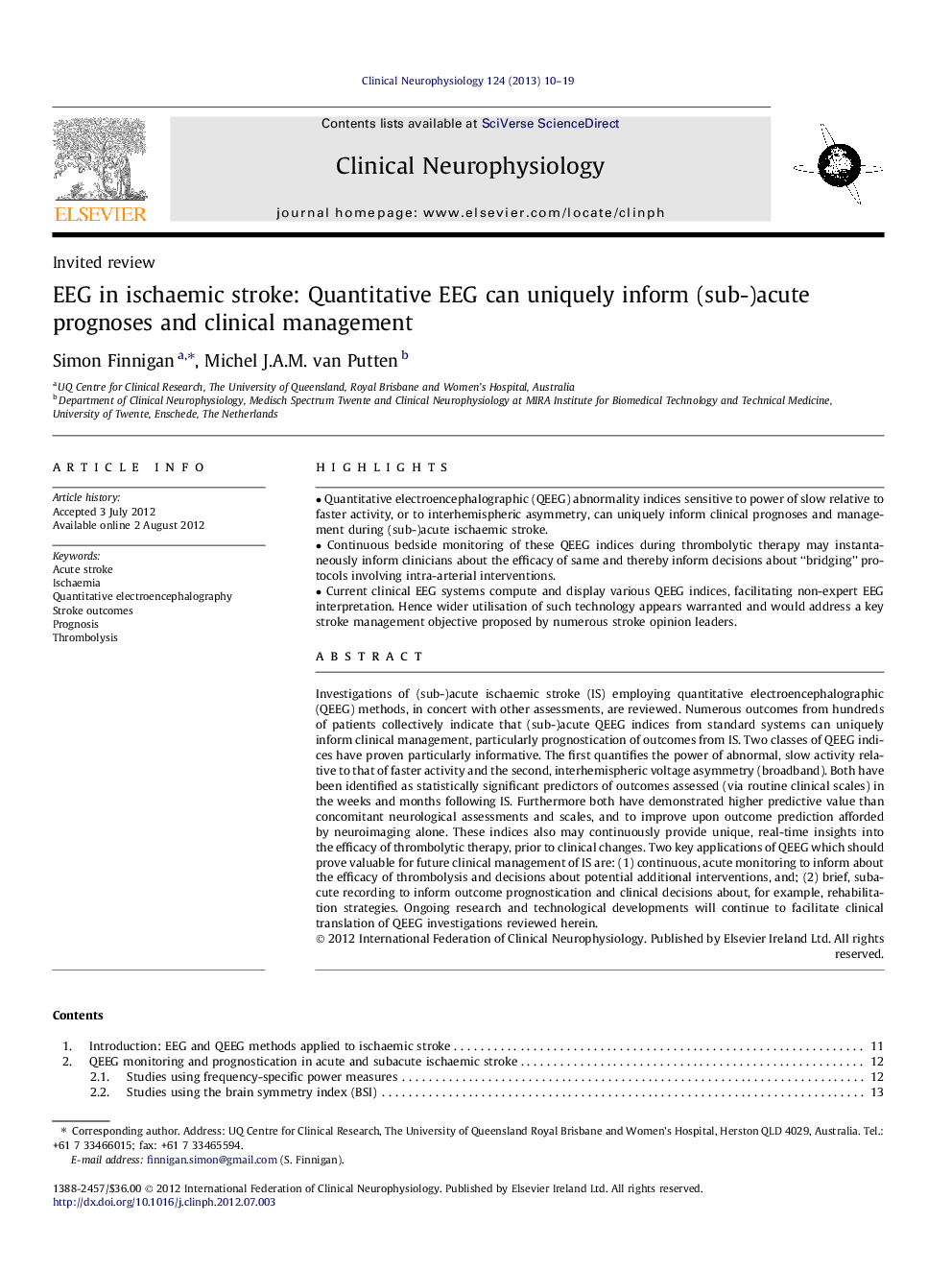| کد مقاله | کد نشریه | سال انتشار | مقاله انگلیسی | نسخه تمام متن |
|---|---|---|---|---|
| 3043028 | 1184968 | 2013 | 10 صفحه PDF | دانلود رایگان |

Investigations of (sub-)acute ischaemic stroke (IS) employing quantitative electroencephalographic (QEEG) methods, in concert with other assessments, are reviewed. Numerous outcomes from hundreds of patients collectively indicate that (sub-)acute QEEG indices from standard systems can uniquely inform clinical management, particularly prognostication of outcomes from IS. Two classes of QEEG indices have proven particularly informative. The first quantifies the power of abnormal, slow activity relative to that of faster activity and the second, interhemispheric voltage asymmetry (broadband). Both have been identified as statistically significant predictors of outcomes assessed (via routine clinical scales) in the weeks and months following IS. Furthermore both have demonstrated higher predictive value than concomitant neurological assessments and scales, and to improve upon outcome prediction afforded by neuroimaging alone. These indices also may continuously provide unique, real-time insights into the efficacy of thrombolytic therapy, prior to clinical changes. Two key applications of QEEG which should prove valuable for future clinical management of IS are: (1) continuous, acute monitoring to inform about the efficacy of thrombolysis and decisions about potential additional interventions, and; (2) brief, subacute recording to inform outcome prognostication and clinical decisions about, for example, rehabilitation strategies. Ongoing research and technological developments will continue to facilitate clinical translation of QEEG investigations reviewed herein.
► Quantitative electroencephalographic (QEEG) abnormality indices sensitive to power of slow relative to faster activity, or to interhemispheric asymmetry, can uniquely inform clinical prognoses and management during (sub-)acute ischaemic stroke.
► Continuous bedside monitoring of these QEEG indices during thrombolytic therapy may instantaneously inform clinicians about the efficacy of same and thereby inform decisions about “bridging” protocols involving intra-arterial interventions.
► Current clinical EEG systems compute and display various QEEG indices, facilitating non-expert EEG interpretation. Hence wider utilisation of such technology appears warranted and would address a key stroke management objective proposed by numerous stroke opinion leaders.
Journal: Clinical Neurophysiology - Volume 124, Issue 1, January 2013, Pages 10–19